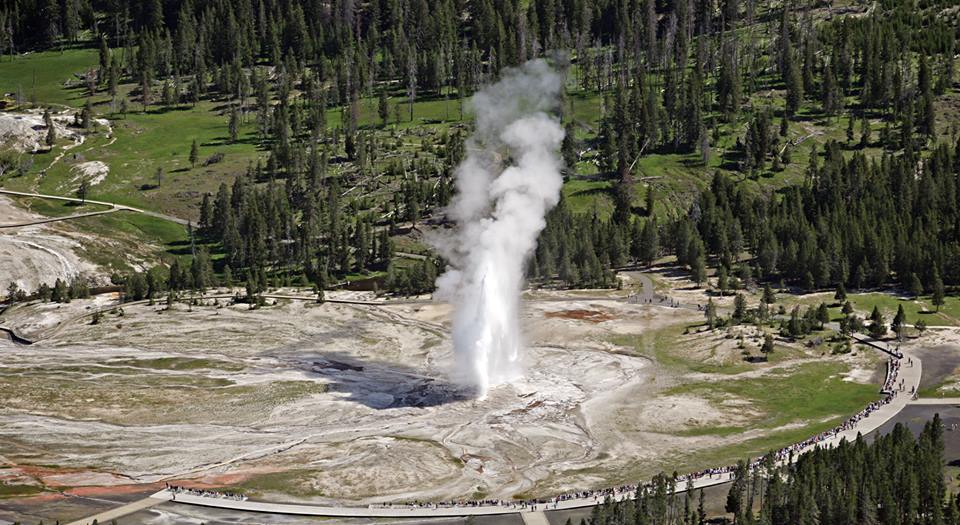Both Yellowstone and Grand Teton used the pandemic to their advantage as their superintendents prepare for another year of projects and people in Wyoming.
During the latest Cody Club Lunch, there were two guest speakers: Cam Sholly, Superintendent of Yellowstone National Park, and Palmer “Chip” Jenkins, Jr., the newly appointed superintendent of Grand Teton National Park.
Sholly gave a PowerPoint presentation of his “State of the Park” for 2021. Jenkins apologized for not having a formal presentation – he’s still in his first three months in his new position.
Superintendent Sholly highlighted the many multi-million-dollar projects underway in Yellowstone, including the recently completed upgrades at Fishing Bridge and Pelican Creek. Once again, he acknowledged how that project most affected Cody and the East Entrance but lauded its success.
The other Cody-adjacent project – the Tower to Mount Washburn road improvement – is ahead of schedule. The two-year project, the first significant roadwork in that area since the 1930s, is on track to be finished in 2021.
More good news – especially for Wyoming and Park County – is the completed renovation of the Mammoth Hot Springs Hotel. Superintendent Sholly called the Yellowstone hotel “the best accommodations in the National Park Service.”
The $40 million renovations upgraded the hotel’s rooms while preserving its historic fixtures. All lodging taxes collected at the Mammoth Hot Springs Hotel go directly to the Park County Travel Council for tourism promotion.
There’s no end of maintenance needed in Yellowstone. Sholly highlighted the upcoming slate of new multi-million-dollar projects projected for the years to come.
- $28 million to replace the Lewis River Bridge
- $78 million to replace the Yellowstone River Bridge
- $221 million in for replacing water and wastewater systems.
- $7 million in rehabilitating boardwalks and trails
From the Grand Teton perspective, Superintendent Jenkins discussed the lessons the park learned in 2020. There are many successes and challenges moving into the future.
Despite the pandemic, Jenkins said Grand Teton only saw a 3% decline in visitation in 2020. Many aspects of the park will be in “full operations” this summer. Crisis, he says, has been the mother of invention in both of Wyoming’s national parks.
Growing numbers of visitors are “a big lift” for the parks, but this comes with its own challenges. In Jenkin’s opinion, the largest challenge is that many people don’t know how to recreate responsibly in Wyoming.
Rather than lament this issue, Jenkins sees it as an opportunity to educate and inspire stewardship throughout the state. Visitor satisfaction and interest remain high, and everyone wants that trend to continue.
Jenkins encourages the use of telecommunications for park guests. Digital tools – like the N.P.S.’s new all-encompassing app – can succeed in educating guests where traditional signs and barriers lack.
Both Superintendents Sholly and Jenkins praised their continuing relationships with the parks’ gateway communities, particularly in light of the pandemic.
Sholly had a special message of thanks to Park County. Thanks to the county and the state, over one thousand park employees are vaccinated against COVID-19. Thousands of additional vaccinations from Park County Public Health and the Wyoming Department of Health are on their way for Yellowstone’s seasonal staff.
“Without Park County’s assistance,” Sholly said, “we’d be looking at another season in the park like 2020. But we’re avoiding another ‘last year’ thanks to those vaccinations.”











